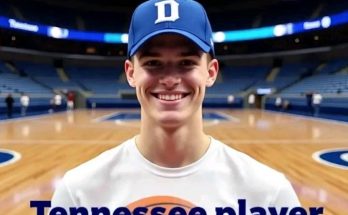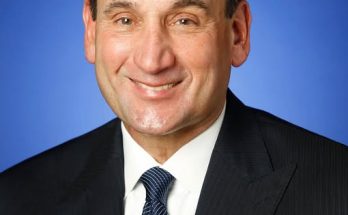Jaland Lowe’s 2024 season with the Kentucky Wildcats was a complicated journey marked by significant highs and frustrating lows, ultimately painting a picture of a talented player wrestling with inconsistencies and the burden of overextension. As a transfer with considerable promise, expectations were high for Lowe to immediately become a key contributor for Kentucky. However, his season did not unfold as smoothly as many had hoped. Instead, Lowe’s campaign revealed fundamental challenges that not only impacted his individual performance but also reflected broader issues within the team dynamics and coaching strategies.
One of the most glaring aspects of Lowe’s season was his struggle with inconsistency. From game to game, and sometimes even within the same match, his level of play fluctuated noticeably. This instability manifested across several facets of his game, from shooting percentages to decision-making and defensive contributions. Such unpredictability made it difficult for coaches to fully rely on him as a dependable force on the court. On some nights, Lowe displayed flashes of brilliance that reminded everyone of his high ceiling—quick bursts of scoring, sharp passing, and timely defensive stops. Yet, those moments were often overshadowed by stretches where his impact was minimal, marked by missed shots, turnovers, and lapses in defensive positioning. This inconsistency created a sense of unease not just among the coaching staff but also among teammates who needed steadiness from a player of his experience.
The erratic nature of Lowe’s performances can be traced to multiple factors, including adjustments to Kentucky’s style of play and the pressure of adapting to a new system and higher expectations. Transitioning into a program like Kentucky, which historically emphasizes intensity, athleticism, and disciplined execution, posed a significant challenge. Lowe had to acclimate to a faster pace and more complex offensive sets, while also understanding intricate defensive schemes. This steep learning curve undoubtedly contributed to his variable output. It’s important to note that many players experience a similar adjustment period after transferring, but in Lowe’s case, the adjustment seemed to last longer than anticipated, and his early struggles cast a long shadow over the rest of the season.
Compounding Lowe’s inconsistency was the issue of overextension. From the outset, Kentucky’s coaching staff appeared to place a heavy burden on Lowe’s shoulders, assigning him a multitude of responsibilities that stretched beyond his natural role. Instead of allowing him to focus on areas where he could thrive, Lowe was often asked to fill gaps, cover weaknesses elsewhere, and take on leadership roles before he was fully comfortable or ready. This overextension led to physical and mental fatigue that hampered his effectiveness on the court. Playing extended minutes against top-tier competition without adequate rest or strategic relief meant that Lowe’s energy levels waned, particularly in critical moments of games where concentration and execution were paramount.
The weight of these added responsibilities likely contributed to some of the inconsistencies noted earlier. When a player is overburdened, it’s common to see a decline in decision-making quality and a drop in efficiency. Fatigue can cause a player to rush shots, commit avoidable turnovers, or miss defensive rotations. In Lowe’s case, this phenomenon was evident at various points during the season. The Wildcats’ coaching staff, perhaps in a bid to maximize his talents and compensate for roster deficiencies, may have inadvertently placed too much on his plate. The result was a cycle where increased expectations led to fatigue, which in turn fueled inconsistency, creating a feedback loop that proved difficult to break.
From a strategic standpoint, this overextension raises important questions about how Kentucky managed Lowe’s integration into the team. It appears that instead of leveraging his strengths—such as his scoring ability, athleticism, and court vision—the coaching staff attempted to plug multiple holes in the lineup with Lowe’s involvement. This approach, while understandable in the face of roster challenges, was ultimately counterproductive. It not only affected Lowe’s performance but also limited his growth potential, as players often need defined roles to excel and develop confidence. A more measured approach that focused on gradually expanding Lowe’s responsibilities as he adjusted might have yielded better results both for him individually and for the team collectively.
Another challenge facing Lowe during the season was the pressure of expectations. As a transfer to a storied program like Kentucky, the spotlight was intense, and every performance was scrutinized by fans, media, and analysts. This pressure can weigh heavily on players, especially those trying to find their footing in a new environment. Lowe’s uneven play may partly reflect the psychological toll of trying to meet high standards amid the natural turbulence of a transition year. Handling such pressure requires not only physical readiness but also mental resilience and support systems within the team framework. If those supports were insufficient or if Lowe felt isolated in his struggles, it would have exacerbated his on-court difficulties.
On the defensive side of the ball, Lowe faced additional challenges that exposed some limitations in his game. Defense requires discipline, anticipation, and communication—elements that are often developed through familiarity with a team’s schemes and personnel. Lowe’s inconsistent defensive performances may have stemmed from a lack of cohesion with teammates or from the sheer physical and mental fatigue caused by his overextended role. Defensive lapses can be particularly costly, as they not only result in opponent scoring but also disrupt team morale. Kentucky’s defense, which has historically been a cornerstone of their success, struggled at times during the season, and Lowe’s inconsistencies in this area were a contributing factor.
Injuries or minor physical ailments, even if not always publicly disclosed, might have played a role in Lowe’s season as well. Players who are overused and pushed beyond their limits often experience wear and tear that can subtly degrade performance. Even slight discomfort or lack of full recovery can impact shooting mechanics, agility, and endurance. If Lowe battled through such issues, it could partially explain the unevenness seen in his play. However, without official confirmation, this remains speculative but worth considering when analyzing the broader picture.
Despite the difficulties, it is important to recognize Lowe’s potential and the glimpses of talent he displayed during the season. There were moments when his athleticism, court awareness, and scoring ability shone brightly, indicating that with the right environment and role clarity, he could become a highly impactful player. His ability to contribute across multiple facets of the game is a valuable asset, and with proper management, these skills could be harnessed more effectively in the future.
Looking ahead, Lowe’s 2024 season serves as a case study in the importance of managing player roles and expectations carefully, particularly when integrating transfers into established programs. Kentucky will need to reflect on how they can better support players like Lowe—balancing the need for contribution with the necessity of rest and role clarity. Coaching strategies that emphasize gradual integration, role definition, and mental health support could help prevent the pitfalls Lowe encountered. Additionally, tailoring practice workloads and game plans to optimize a player’s strengths while minimizing overextension is critical.
From Lowe’s perspective, the season provides valuable lessons about adapting to new environments and managing the pressures of high-level competition. Developing consistency will be key moving forward, as will building the stamina and mental resilience to handle extended responsibilities without performance dips. Improved communication with coaches and teammates can also help in finding the right balance between contributing and conserving energy. If Lowe can harness these lessons, the challenges of 2024 may serve as stepping stones to a more productive and satisfying career at Kentucky or beyond.
In summary, Jaland Lowe’s 2024 season was one of unrealized potential and hard lessons. The twin issues of inconsistency and overextension undermined his ability to deliver consistent, impactful performances. These challenges were symptomatic of a larger struggle to find his place within Kentucky’s system amid high expectations and demanding roles. The season’s ups and downs highlighted the need for better role management, player support, and strategic coaching adjustments to maximize Lowe’s talents without overburdening him. While the journey was fraught with difficulties, it also offered a foundation for growth. With careful development and support, Lowe has the capacity to overcome the obstacles faced in 2024 and emerge as a stronger, more reliable player in the seasons to come. His story is a reminder that talent alone is not enough; consistency, role clarity, and physical and mental balance are equally essential to achieving success at the highest levels of collegiate basketball.


